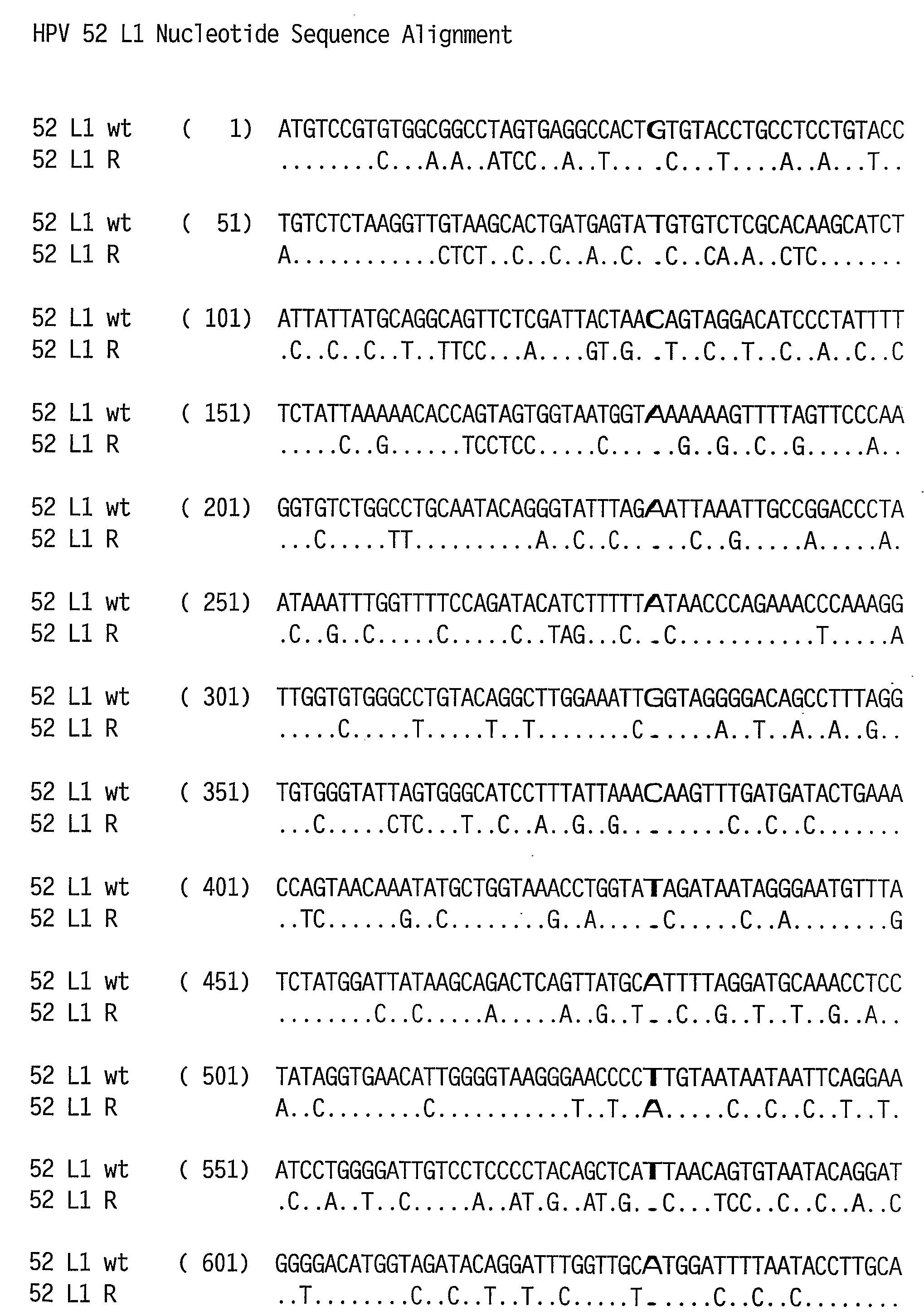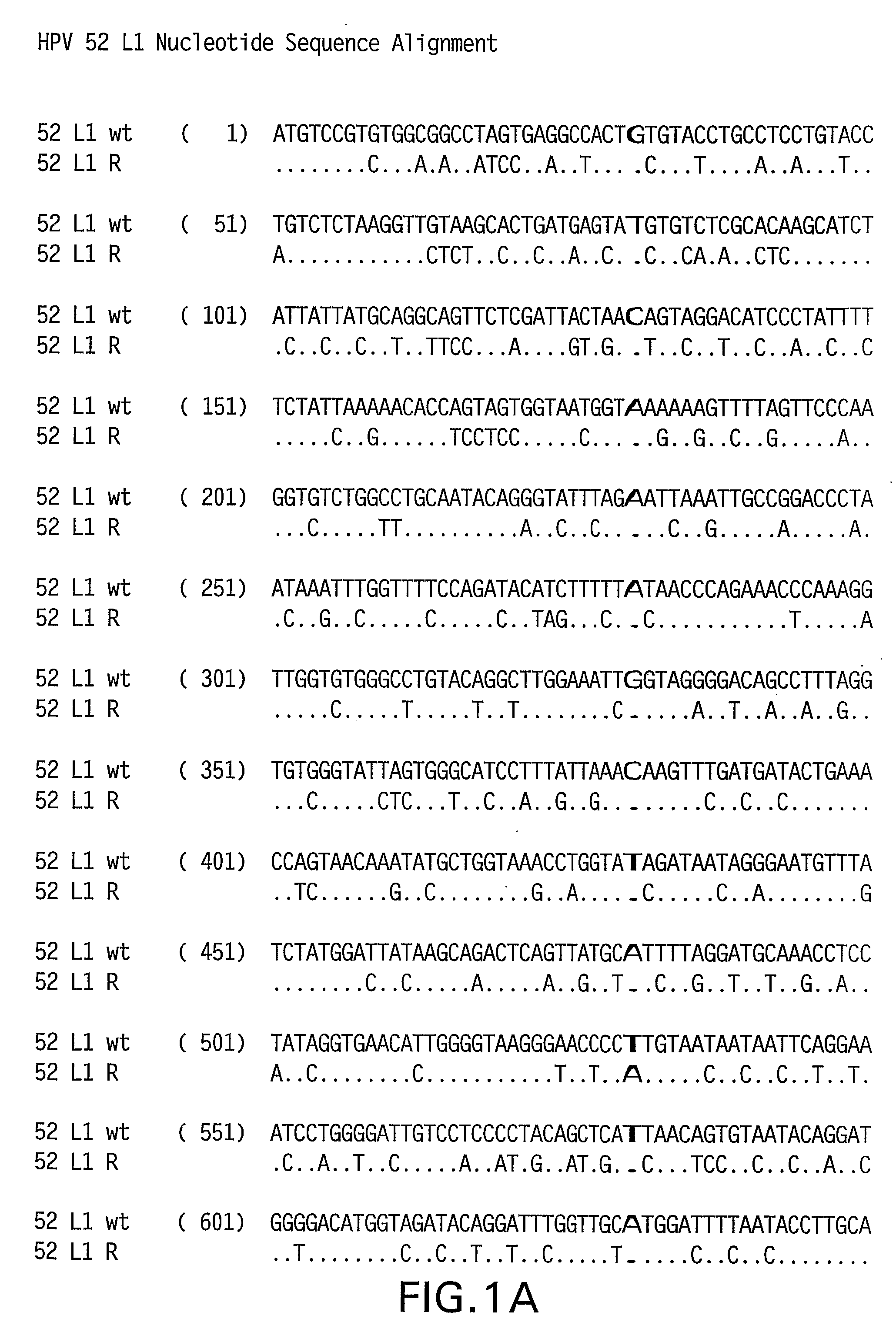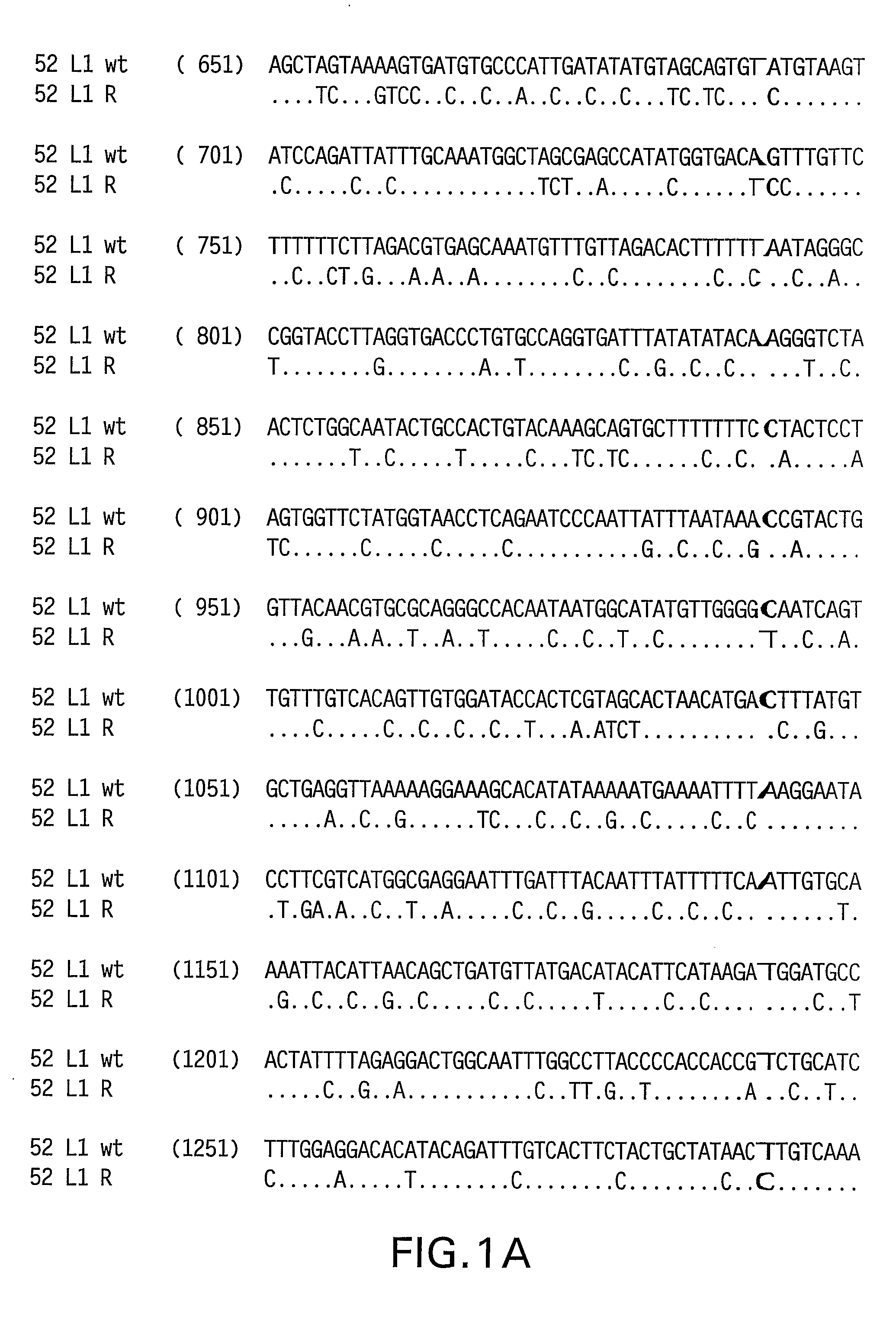Optimized Expression of Hpv 58 L1 in Yeast
- Summary
- Abstract
- Description
- Claims
- Application Information
AI Technical Summary
Benefits of technology
Problems solved by technology
Method used
Image
Examples
example 1
Determination of a Representative HPV 52 L1 Sequence
[0076]The HPV 52 L1 sequence has been described previously (Genbank Accession # NC 001592). It is not uncommon, however, to find minor sequence variations between DNAs obtained from clinical isolates. To determine a representative HPV 52 L1 wild-type sequence, DNA was isolated from three clinical samples previously shown to contain HPV 52 DNA. HPV 52 L1 sequences were amplified in a polymerase chain reaction (PCR) using Taq DNA polymerase and the following primers: 5′ L1 5′-A T G T C C G T G T G G C G G C C T A G T-3′ (SEQ ID NO:4) and 3′ 52 Bgl II 5′-G A G A T C T C A A T T A C A C A A A G T G-3′ (SEQ ID NO:5). The amplified products were electrophoresed on agarose gels and visualized by ethidium bromide staining. The ˜1500 bp L1 bands were excised and DNA was purified using Geneclean Spin Kit (Q-Bio Gene, Carlsbad, Calif.). The DNA was then ligated to the TA cloning vector, pCR2.1 (Invitrogen). TOP10F′E. coli cells were transform...
example 2
[0080]Yeast-preferred codons have been described (Sharp, Paul M and Cowe, Elizabeth. Synonymous Codon Usage in Saccharomyces cerevisiae YEAST 7: 657-678 (1991)). Expression of the HPV 52 L1 wt protein was detectable; however, the level of transcription was very low and not detectable by Northern blot. It was postulated that pre-mature transcription termination may be responsible for the low expression levels of the HPV 52 L1 gene. To increase transcription of this gene and ensure full-length transcripts would be produced, the HPV 52 L1 gene was rebuilt utilizing yeast-preferred codons. The sequence was inspected for the presence of yeast transcription termination signals that are recognized by yeast, and these sequences were eliminated by substitution with alternative codons, while preserving the same amino acid sequence. The rebuilt HPV 52 L1 sequence, which comprises yeast codon-optimized sequences, contained 379 nucleotide alterations compared to the HPV 5...
example 3
RNA Preparation
[0085]Cell pellets of transformed yeast induced to express HPV 52 L1 by galactose induction were thawed on ice, suspended in 0.8 ml of Trizol reagent (Life Technologies, Gibco BRL) and incubated at room temperature for 5 minutes. One fifth volume of chloroform was added to the vial. It was then shaken vigorously for 15 seconds to mix and incubated at room temperature for 3 minutes. After a 5 minute centrifugation at 13 k rpms, the upper phase was collected and transferred to a new vial. 0.4 ml isopropanol was added to the vial. The mixture was incubated at room temperature for 10 minutes. To pellet the RNA, centrifugation was performed at 13 k rpms for 10 minutes. The supernatant was decanted, the RNA pellet washed with 75% EtOH and the centrifugation step was repeated. The supernatant was decanted and the RNA pellet was allowed to air dry for 15 minutes followed by suspension in RNase-free water. Spectrophotometry was performed to determine the concentration of RNA i...
PUM
| Property | Measurement | Unit |
|---|---|---|
| Volume | aaaaa | aaaaa |
| Immunogenicity | aaaaa | aaaaa |
Abstract
Description
Claims
Application Information
 Login to View More
Login to View More - R&D
- Intellectual Property
- Life Sciences
- Materials
- Tech Scout
- Unparalleled Data Quality
- Higher Quality Content
- 60% Fewer Hallucinations
Browse by: Latest US Patents, China's latest patents, Technical Efficacy Thesaurus, Application Domain, Technology Topic, Popular Technical Reports.
© 2025 PatSnap. All rights reserved.Legal|Privacy policy|Modern Slavery Act Transparency Statement|Sitemap|About US| Contact US: help@patsnap.com



